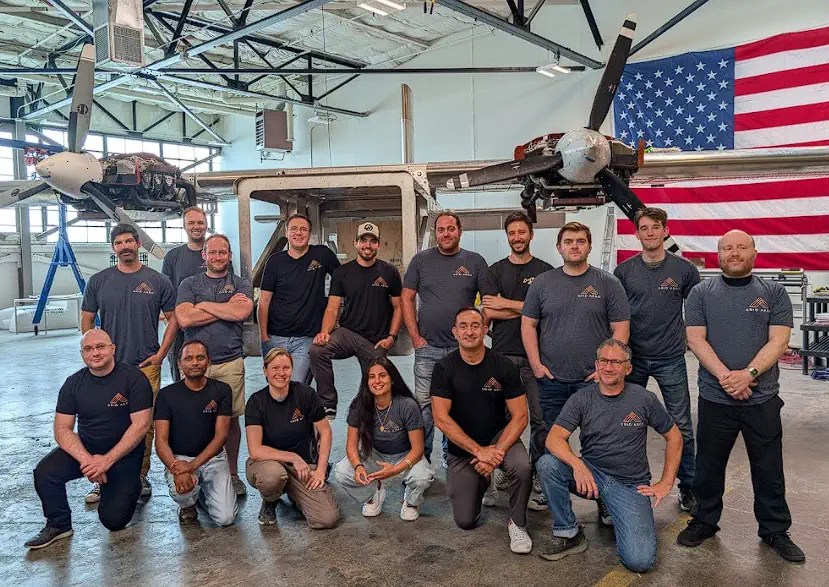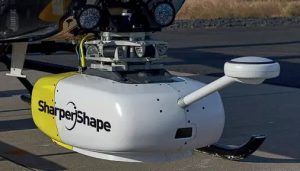Grid Aero: Transforming Air Cargo with Lifter Lite
Grid Aero, a startup based in California, has made a bold entrance into the aviation industry. The company has secured $6 million in funding and developed a cutting-edge autonomous cargo aircraft named “Lifter Lite” in just six months, from concept to prototype. This ambitious timeline is gaining attention for its potential to revolutionize the logistics market with innovative, scalable solutions.
The Significance of Grid Aero
Grid Aero aims to revolutionize the future of autonomous air cargo. The company envisions solving global logistics challenges with rugged, cost-effective, and self-flying cargo aircraft designed for both commercial and defense applications.
Main Innovations
- Lifter Lite: Dubbed as “the pickup truck of the skies,” this drone is designed to carry substantial payloads, offering a significant advantage over most existing commercial drones.
- Efficiency and Simplicity: Assembly was completed shortly after the company initiated work in January, with ground tests expected in the fall.
- Attritable Fleet Strategy: Rather than focusing on large, costly aircraft, Grid Aero’s strategy involves deploying simple, durable drones in distributed fleets, minimizing impact if any are lost in contested airspace.
Design Philosophy: Simplicity and Speed
Grid Aero’s founders, led by CEO Arthur Dubois, a veteran from Joby Aviation and Xwing, focus on simplicity in aircraft design. The Lifter Lite features a thin-sheet metal airframe with basic rivets, powered by a diesel engine, which addresses range and payload limitations typical of battery-powered aircraft. This approach allows the majority of investment to focus on autonomy and software.
Operational Design Choices
- No VTOL: Lifter Lite does not feature vertical takeoff and landing capabilities but can operate from short, undeveloped airstrips.
- Low-Tech by Intention: The minimalist design philosophy aims to keep costs down and facilitate rapid production.
- Flexible Missions: Though primarily for cargo, it can also be adapted for intelligence, medevac, or reconnaissance, staying true to its cost-effective, attritable nature.
- Operational Autonomy: The aircraft minimizes downtime by automatically loading and fueling, then flying itself.
The Importance of Timing
Several trends make Grid Aero’s launch timely:
- Military Logistics: For modern military operations, particularly in geographically challenging areas like the Pacific, the demand for distributed, risk-tolerant resupply solutions is critical.
- Commercial Needs: Increasing e-commerce and the requirement for rapid delivery, especially for medical supplies or disaster aid, necessitate low-cost, flexible cargo aircraft.
Potential Applications
- Agile Combat Employment (ACE): The U.S. Air Force is testing distributed forces across small airstrips, aligning perfectly with Lifter Lite’s design as a reliable tool that can withstand mission losses.
- Humanitarian Relief: Quick, affordable delivery of aid to inaccessible regions.
- Commercial Logistics: Cost-effective parcel delivery to isolated communities and industrial sites.
Competitive Comparison
| Feature | Grid Aero (Lifter Lite) | MightyFly (Cento) | Silent Arrow GD-2000 (YEC) |
|---|---|---|---|
| Payload | “Thousands of pounds” (exact not yet public) | 100 lbs | 1,250 lbs |
| Range | “Long range” (not yet public) | 600 miles | 36 miles (glide, unpowered) |
| Power | Diesel | Electric | Unpowered glider |
| Takeoff/Landing | Runway (STOL: ~1000 ft) | eVTOL | Glider launched from cargo aircraft |
| Autonomy | Full, minimal ground support | Full, with auto package handling | Autonomous, but not powered |
| Development Speed | 6 months to full-scale prototype | Not specified | 1-2 years for new variants |
| Price/Attritability | Ultra-low, “attritable” | Aimed at market value | Not specified |
| Markets | Military, commercial | Commercial, defense, med supply | Military, disaster relief |
Lifter Lite’s competitive advantage lies in its rapid, modular design, cost-effective production, and emphasis on reliability tailored for distributed logistics, not groundbreaking hardware innovation.
Team and Funding
- Founders: Led by CEO Arthur Dubois, with experience at Joby Aviation and Xwing, and Chief Strategy Officer Alex Kroll, a former U.S. Air Force test pilot.
- Culture: The team values practical, rapid development over aesthetic aerospace designs, emphasizing operational efficiency.
- Funding: The $6 million funding round reflects investor confidence in the team’s expertise and vision.
Challenges and Prospects
Industry experts view Grid Aero with cautious optimism. The company’s approach—focusing on mission reliability rather than engineering perfection—is poised to address previous hurdles faced by cargo drone projects. However, challenges remain in regulatory approval and achieving the proposed cost and functional targets, especially under military conditions. Nonetheless, if successful, Grid Aero could redefine small- and medium-scale air cargo.
Future Outlook
- Testing and Certification: Following ground evaluations, expect flight tests later in 2025, determining the prototype’s transition to certified production.
- Military Contracts: While early Air Force interest is noted, substantial orders hinge on demonstrating effectiveness and passing regulatory standards.
- Commercial Opportunities: Success hinges on proving the reliability of the attritable model for diverse sectors like parcel delivery, agriculture, and emergency services.
Grid Aero is positioned at the forefront of a logistics transformation. Their strategic focus on a distributed, resilient, and affordable approach to air cargo aligns with emerging industry trends, offering new pathways for logistics management across military and civilian domains.













